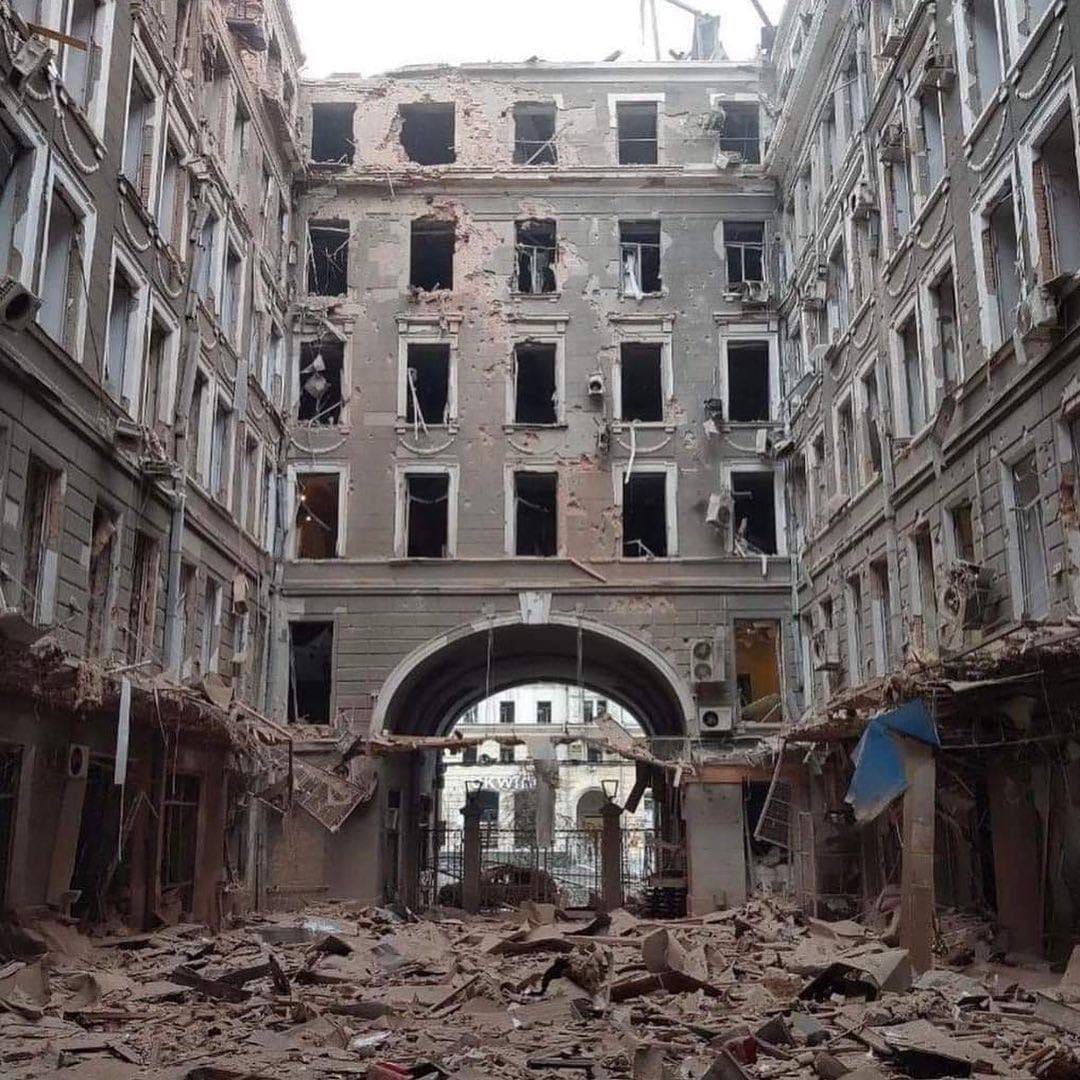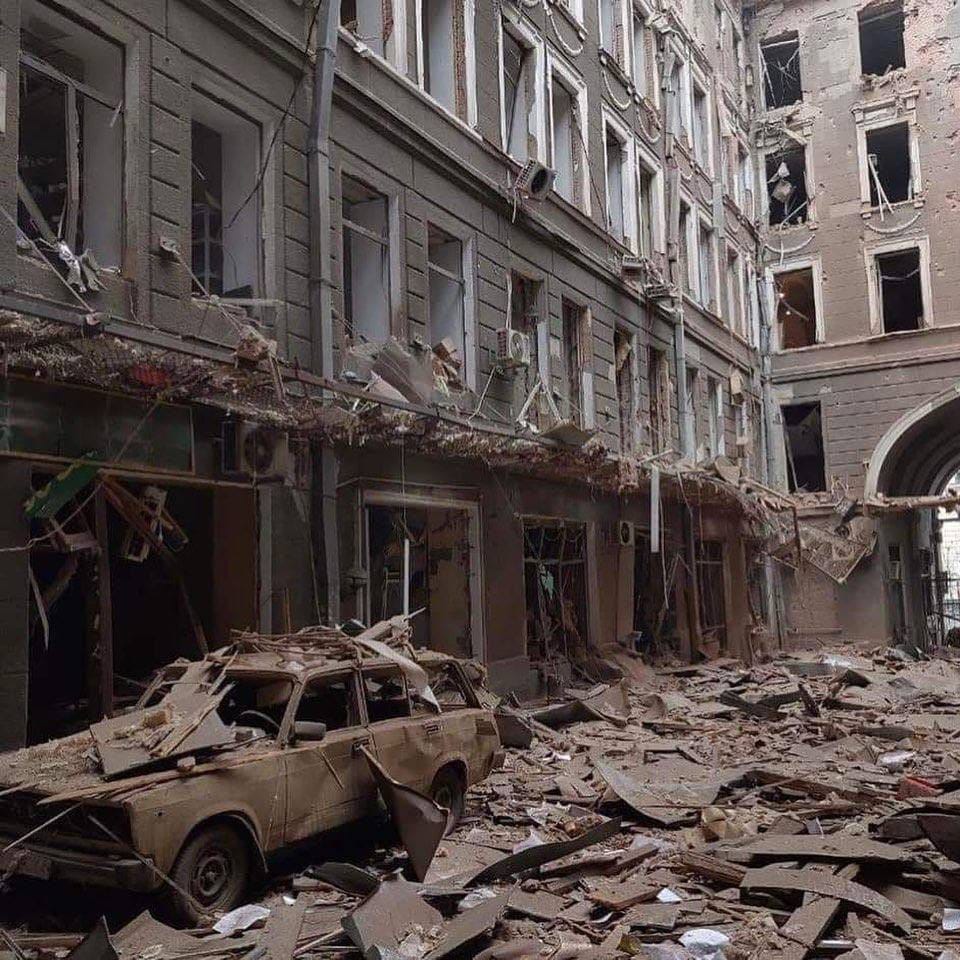Part II: The (literal) cost of war
Written by: Val Stutz, Edited by: Wilmer Rojas, Quotes in this series have been edited for readability and concision.
“Downtown Kharkiv is just destroyed,” Andy told us. “It's one thing to see it on TV. It's another thing to see it with your own eyes. I still felt like I wasn't prepared. When I saw downtown – I don't know how to describe it. It took my breath away.”
The cost of war is immense. Both the cost of human life and livelihood, as well as the literal cost of war on culture, a country’s infrastructure, and hopes for the future. In this section, we consider the literal cost of the Russian Invasion and ponder the senselessness of 10-years worth of work being undone in the course of a month with no real end in sight.
According to the Kyiv School of Economics, as of March 24th, “Direct damage caused to Ukraine’s infrastructure during the war has already reached almost $63 billion. Global economic losses are about $543–600 billion.” The analysis was performed by the Russia Will Pay project and volunteers from partner organizations, especially the Center for Economic Strategy and Prozorro.Sale.
The report goes on to say, “As estimated by the Ministry of Economy and KSE, overall Ukraine’s economic losses due to the war, taking into account both direct losses calculated in this project and indirect losses (GDP decline, investment cessation, the outflow of labor, additional defense and social support costs, etc), range from $543 billion to $600 billion.
“Since the beginning of Russia’s military aggression on February 24, at least 4431 residential buildings, 92 factories/warehouses, 378 institutions of secondary and higher education, 138 healthcare institutions, 12 airports, and 7 thermal power plants/hydroelectric power plants have been damaged, destroyed or seized in Ukraine.”
As Andy had recalled in Part I of our series, “In the last 10 years, I noticed a difference. Things had started to move prior to the invasion.” So, just how much progress has been undone? That answer seems unclear for the foreseeable future.
Within the last two years, Ukraine had planned to invest billions in the development of its infrastructure. As reported by the International Trade Administration, “In autumn 2019, Ukrainian President Volodymyr Zelensky announced the launch of a ‘Great Construction’ National Program. The purpose of the program was to build the necessary infrastructure throughout Ukraine. On March 1, 2020, construction works on more than 300 sites began simultaneously, including the construction and renovation of more than 100 schools, 100 kindergartens, 100 stadiums, and 200 new hospital admission departments. The construction of 4,000 km of roads was launched as well.”
Admittedly, COVID-19 foiled many efforts in those two years. In 2020, Ukraine’s economy shrank by 4.9%. The construction sector alone shrank by around 10%, depending on estimates, in the same year. Yet hopes were high for the post-pandemic years until Russia invaded the country. So Ukraine is bearing the brunt of a double hit from COVID-19 and now a devastating invasion by a foreign aggressor.
“In terms of infrastructure so much is being destroyed,” said another Ukrainian we spoke with, Katya, from Dnipro. “Public buildings are being destroyed, as well as people's homes. I don't know how it will be when the war ends. We'll all go back and try to rebuild everything, but I don't know how it will work. There was so much invested in the infrastructure before the war that is now destroyed. How much time, effort, money, and resources will we have to put in to get back to where we were?
And then there is the issue of people's homes. How many people don't have a home to return to? I'm not sure how things are going to be better in the near future, but people are most optimistic. Many people are saying, ‘We want to go back. We want to rebuild whatever we can. We will do whatever we can. We will get it done.’ The main thing now is to wait for the war to stop and figure things out from there. The general attitude is optimistic, but I'm not sure how realistic that is.”
But the invasion has affected more than just infrastructural costs; the outflow of refugees from the country will undoubtedly have lingering costs, both literal and spiritual. According to a Pew Research Center analysis of United Nations data, “A month into the war, more than 3.7 million Ukrainians have fled to neighboring countries – the sixth-largest refugee outflow over the past 60-plus years.”
This number does not include foreign refugees like Andy, whose numbers are unclear for a variety of reasons. Additionally, non-Ukrainian refugees fleeing Ukraine are not offered the same support or resources once they are able to escape the invasion. It is a blindspot in a well-intentioned system; as a result, non-Ukrainian refugees threaten to fall through the cracks.
After the fighting has stopped and the warplanes have retreated, how many of Ukraine’s refugees will ever see Ukraine again? How long will it take to rebuild? Will they be able to rebuild? How much of Ukraine will still be Ukraine? At the moment, we have no idea, but all of these questions will add to the often opaque cost of war in the short and long term.






